The Tale of the Great Shahnameh
Reading Time: 9 min
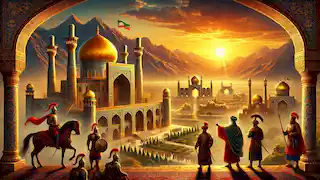
About Story: The Tale of the Great Shahnameh is a Myth from iran set in the Ancient. This Dramatic tale explores themes of Courage and is suitable for All Ages. It offers Cultural insights. An epic of Persia’s greatest heroes, brimming with valor, fate, and the eternal struggle of light and dark.
In the heart of ancient Persia, during the days when the deserts stretched far and wide, there lay a mystical realm of kings, warriors, and poets. This realm was more than just a place; it was a world woven from the bravery of heroes, the wisdom of wise men, and the undying honor of its people. This was the world captured in the "Shahnameh," the grand epic of Iran, written by the poet Ferdowsi, who spent thirty years crafting verses that would immortalize the valor and tragedies of Persia’s greatest figures.
The "Shahnameh," which translates to "The Book of Kings," stands as one of the longest epic poems ever written, filled with tales of battles, love, betrayal, and redemption. It tells the story of a civilization that thrived and was tested through the ages. In its verses, the reader encounters grand heroes like Rostam, the legendary warrior; Zal, the wise and noble; and King Jamshid, who presided over an era of prosperity before his tragic fall. Long ago, Persia was ruled by Kiumars, the very first king. It was under his guidance that humanity began to flourish. Kiumars was a noble leader, a figure revered by all who gazed upon him, and he was seen as a divine ruler blessed by the gods. His people were primitive, closer to nature than they would ever be again, and they followed his wisdom with a loyalty that was as pure as it was ancient. Kiumars had a son, Siamak, who was beloved by all, a courageous and kind-hearted prince destined for greatness. Yet, in the shadows lurked Ahriman, the devilish spirit opposed to the goodness and light that Kiumars represented. Fueled by hatred, Ahriman conspired against Kiumars, unleashing his own monstrous offspring to end Siamak’s life and bring darkness to Persia. The battle was brutal, and Siamak fell, leaving Kiumars to grieve profoundly. But Kiumars would not let sorrow overcome him. He gathered an army, calling upon his people to avenge Siamak’s death and bring justice to the world. It was a victory for the forces of light as they defeated Ahriman's vile creatures, cementing the first victory in Persia’s storied history. Following Kiumars’s death, his grandson Hushang took the throne, inheriting the spirit of leadership. Hushang was a wise king, credited with bringing knowledge to his people, from teaching them the art of using fire to constructing tools and buildings. His discoveries marked the start of a golden age, one that would propel Persia toward greatness. Hushang’s wisdom laid the foundation for the growth and prosperity of his kingdom. One day, while hunting, Hushang encountered a snake—a creature he had not seen before. Startled, he threw a stone at it, which struck a rock, creating sparks that burst into flames. Realizing the power of fire, Hushang introduced it to his people, an element that would forever change their lives, enabling warmth, cooked food, and new forms of craftsmanship. With his guidance, Persia thrived, and the spirit of unity and resilience among his people grew stronger. Yet, Hushang’s rule was also met with challenges, as rivalries and threats from dark forces continued to test the resolve of the kingdom. But the people held onto hope, as the memory of Siamak’s sacrifice and Kiumars's resilience reminded them of their origins and the power of their unity. After Hushang’s passing, Jamshid, a mighty king of unparalleled grandeur, ascended to the throne. Under his rule, Persia reached heights of luxury and enlightenment unknown to any other land. Jamshid was a visionary who ruled not only as a king but as a god-like figure, bringing knowledge and prosperity to his kingdom. His wisdom allowed him to establish magnificent cities, construct palaces of beauty, and invent new forms of medicine and magic. Jamshid’s reign lasted for centuries, and his people loved him dearly. He introduced a social structure that organized his subjects and improved their lives. Yet, over time, Jamshid became filled with pride, believing he was invincible, even superior to the gods. This hubris angered Ahura Mazda, the god of wisdom, who withdrew his divine support from the king. Without this blessing, Jamshid’s glory began to fade, and his subjects grew discontented. Seeing Persia weaken, the malevolent Zahhak, a tyrant from distant lands, seized the opportunity. Zahhak overthrew Jamshid, driving him into exile, and his rule brought untold suffering to the land. The people of Persia, once prosperous and free, were now oppressed under Zahhak’s iron fist. The once-great Jamshid wandered in obscurity, consumed by his pride and regret. His story served as a cautionary tale—a reminder that greatness must be tempered by humility, or it would be lost. Zahhak’s reign was brutal, marked by a unique and horrifying curse: two serpents sprouted from his shoulders, a symbol of his pact with the forces of evil. Every day, the serpents demanded the brains of the young, plunging Persia into a darkness of fear and despair. The once-mighty civilization now suffered under a bloodthirsty tyrant, and it seemed there would be no end to their misery. But in the shadows, resistance grew. Prophecies whispered of a hero who would rise to challenge Zahhak’s tyranny. The people of Persia held onto hope, waiting for their deliverance from the dark days under Zahhak’s cruel rule. Their faith was not in vain, for a hero would indeed come. As foretold by the ancient prophecies, Feraydun emerged, a man destined to restore light to Persia. Feraydun’s journey was not easy; he had been hidden away since childhood to escape Zahhak’s wrath. When he came of age, Feraydun gathered allies and led a revolt against Zahhak, igniting a rebellion that surged across the land. His weapon was justice, his armor was truth, and his spirit was fueled by the hope of his people. The battle between Feraydun and Zahhak was legendary. Clashing swords, powerful spells, and the relentless spirit of the people of Persia converged in a final confrontation that saw Zahhak defeated. With the tyrant overthrown, Feraydun took the throne, vowing to restore honor and compassion to the kingdom. Under his rule, Persia flourished once more, and the people celebrated the return of peace. Years passed, and tales of heroes continued to grace Persia. One of the most heartrending stories was that of Rostam, a mighty warrior, and his son Sohrab. Unknown to Rostam, Sohrab was born of his union with a noblewoman he had loved but had to leave behind due to his duties as a hero. Sohrab grew up hearing tales of his father’s valor and yearned to meet him. Driven by a desire for recognition, Sohrab sought Rostam, but fate intervened cruelly. When the two finally met on the battlefield, neither knew of their kinship, and they fought fiercely. Rostam, unaware that the young warrior before him was his son, struck Sohrab a fatal blow. As Sohrab lay dying, he revealed his lineage to Rostam, whose heart broke with the realization. In his grief, Rostam honored his fallen son, vowing to carry Sohrab’s memory with him forever. This tragic tale became a lesson to the people of Persia about the cost of pride and the unpredictable nature of fate. Another tale of heroism and sacrifice lies in the story of Siyavash, a prince known for his honesty and purity. Accused unjustly of treason, Siyavash chose to prove his innocence by walking through fire, a trial that he passed unharmed. His loyalty and integrity won him the love of the people, but he was soon betrayed by courtly politics and the jealousy of others. Forced into exile, Siyavash built a new life far from his homeland. He established a kingdom that flourished under his rule, though his heart ached for Persia. Tragically, he was eventually betrayed and killed, leaving a legacy of honor and devotion to justice. His story reminded the people that true heroism lies not just in strength but in one’s steadfastness to truth and integrity. The son of Siyavash, Key Khosrow, inherited his father’s valor and desire for justice. Key Khosrow embarked on a journey to reclaim his birthright and restore peace to Persia. Along the way, he encountered many allies, fought fearsome foes, and overcame tremendous challenges. Under his rule, Persia flourished, and he became a king beloved by his people. In his final days, Key Khosrow, weary from the burdens of leadership, chose to leave the throne and seek solitude. With a heavy heart, he departed into the mountains, where he disappeared, leaving behind a legacy of justice and unity. His memory lingered in the hearts of his people, reminding them of the sacrifices made for their freedom and peace. The "Shahnameh" is more than a collection of stories; it is the essence of Persia, an immortal tale of bravery, sacrifice, and the indomitable spirit of a people. Each hero, each battle, each tragedy and triumph serves as a mirror reflecting the ideals of honor, courage, and resilience cherished by the people of Iran. Through the "Shahnameh," Ferdowsi sought to preserve a history and culture that would withstand the tests of time, offering future generations a source of inspiration and pride. The tales of the "Shahnameh" continue to echo through the ages, celebrated by Iranians and admirers of Persian culture alike. It is a testament to the enduring power of stories to bridge the past and future, reminding us all of the values that shape us and the heroes who define us.The Beginnings of Persia
The Rise of Hushang
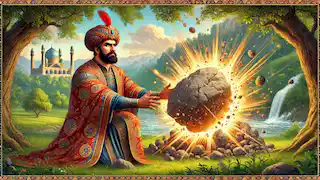
Jamshid’s Splendor and Fall
The Tyranny of Zahhak
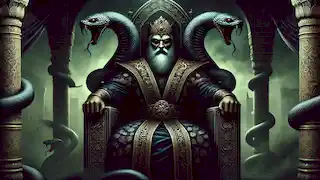
Feraydun and the Fall of Zahhak
Rostam and Sohrab
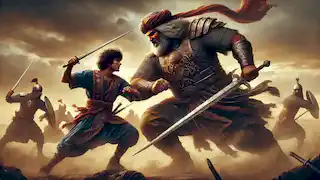
The Trials of Siyavash
The Rise of Key Khosrow
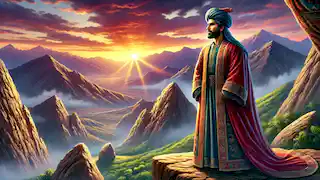
Conclusion: The Legacy of the Shahnameh

















